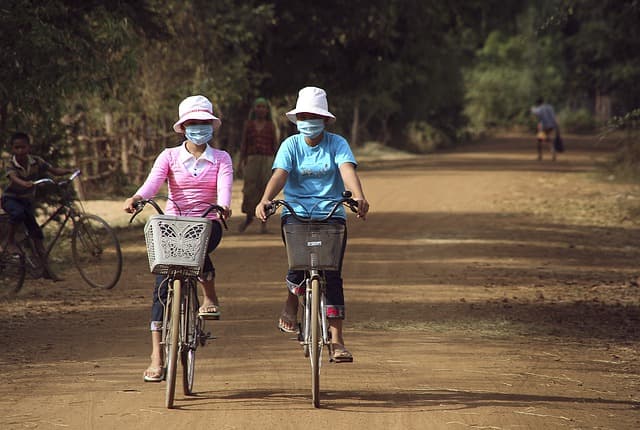What are the “coronapists”?
Table of contents
ToggleCoronapistes are temporary cycle paths set up in major cities around the world to allow people to travel by bike while respecting the various instructions related to the fight against the pandemic. They indeed extend for miles and miles and mainly allow you to avoid public transport and follow the rules of social distancing.
Among the cities that have already widened their cycle paths, it is worth mentioning: Bogota, Berlin, New York, Denver, Mexico City and Seville. These encourage cycling to provide an effective solution to the crisis. And for their part, French cities such as Paris, Lyon, Montpellier, Rennes, Nantes and Reims are considering it.
Bogotá, the city of cyclists
As for Bogota, for example, it has really become the city of cyclists. Its mayor has opened 76 km of coronapists since February and has limited car traffic. Thus, the inhabitants have become accustomed to cycling on a daily basis and it has even been noticed that around two million people use the new cycle paths every weekend to do their shopping, to practice sports and to to entertain.
Reims, in the reflection phase for new cycle paths
In Reims, "the reflection is engaged" confirms Laure Miller, the Deputy Mayor. It is certain that when public transport is back in the city, the inhabitants will shun it because they will be afraid of contagion to covid-19. Suddenly, the bike will therefore appear as a “safe” way to get around while respecting the rules of social distancing.
However, Reims, as elsewhere, must comply with the deconfinement measures taken by CEREMA. This means that it must condemn certain lanes reserved for cars in order to develop coronapists wider than traditional cycle paths. The latter can precisely occupy two-lane roads and new routes will connect the different districts.
The use of electric bicycles further encourages this development, temporarily or permanently, with the possible development of urban furniture adapted to each situation: car park two wheels, charging point, repair and maintenance station…
Until then, the studied axes are 4 in number, including: an axis which goes from the place of the Republic to the Farman zone; an axis that will link the Vesle bridge to Tinqueux, an axis that leads from boulevard de la Paix to boulevard Wilson; and finally a last axis which goes from the boulevard de la Paix to the bridge of Witry. It should be noted that the limitation to a maximum distance of one kilometer from home does not apply to cyclists.
Coronapiste and urban planning
If we can only welcome the development of new cycle paths in cities, it is certain that the context remains difficult. It will be necessary that constrained habits emerge a new sustainable way of moving in cities. These new uses will involve new developments and urban equipment, such as bicycle parking (shelters et bike racks) to meet the needs of new cyclists.

